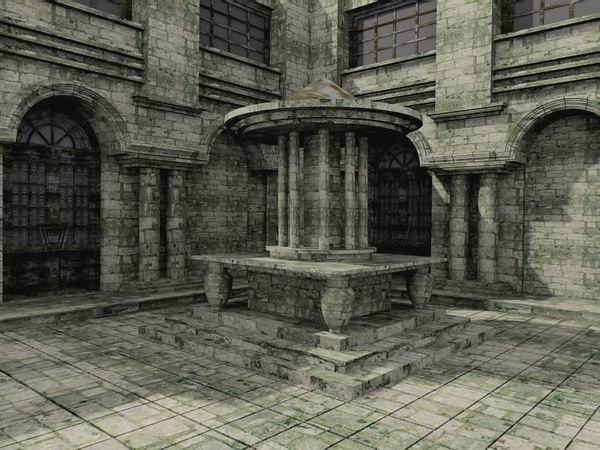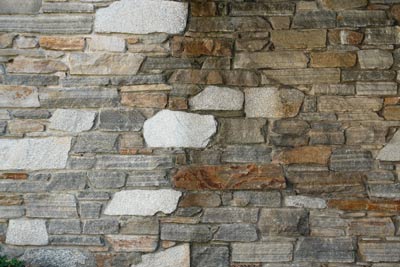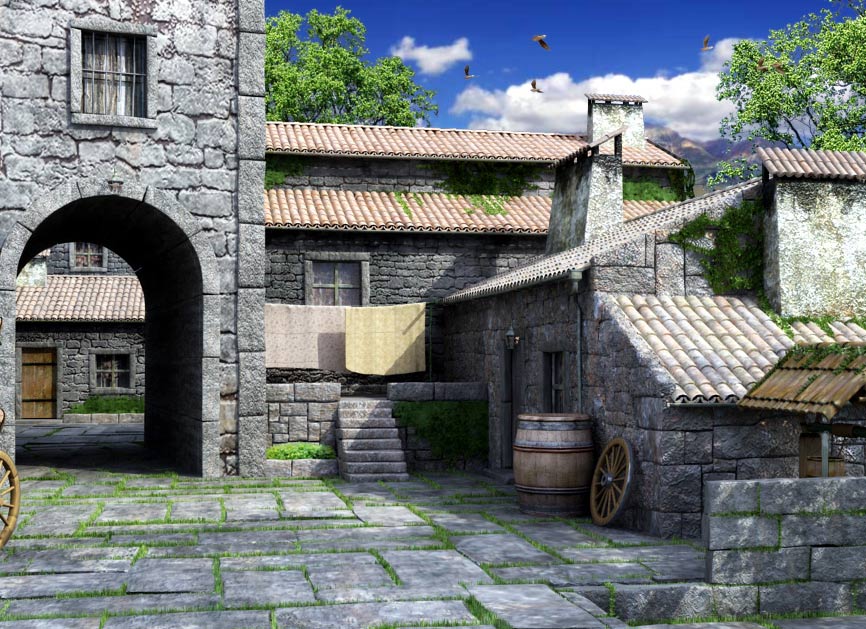Can you Bump Map in blender? if you can,…How?
you sure can!
when you apply a texture (be it clouds, image, etc) if you go into the “map to” tab if you set the nor button and unselect the col button you will get your bump map. It works of the black, grey, and white areas of a texture where the black becomes “imprinted” on your mesh.
Thanks! i wanted to know that!
I will like to understand this mapping delema too! can this be apply also in creating the way brick walls/building/floor looks or any brick 3d deformation like this one, thanks:
Attachments

Sure. 
Don’t forget you also have normal maps. Those are like bumpmaps, but with a full color spectrum. Feeblemind has a tut on creating normal maps here: http://feeblemind.tuxfamily.org/dotclear/index.php/2005/08/23/43-tutorial-blender-and-normal-maps
Don’t forget that bump maps and normal maps only create an illusion of irregularity so bump maps only work well for very small irregularities which are way too plentiful to model by hand. Like scratches on a metallic surface or the small details of a stone (which has a rough surface).
If you want your map to actually move the vertices you need: 1) a LOT of vertices on your mesh 2) a displacement map.
So, normal maps are just like bump maps??? 
also when you said (a lot or vertices in your mesh) do you mean to
divide the mesh multiple times?
a) Yes and no. They have similar (if not the same) purposes but are used in different situations and are made in a different way. Normal mapping is most often found when you do Low poly modelling. It is not really useful if you want to add specific characteristics to your surface like metallic rust or something. Then you’d go with a bump map (to put it simple…).
So, you’ll most likely want to look for bump mapping.
b) Yes. That is necessary if you want to achieve good results with Displacement, since it actually moves the vertices during rendering. And the more you have, the better the outcome will be.
Ok, make sence!, now what I understand, for the texture image the presidure is from color to black and white?, like this:
Attachments


That’s a good idea to start with. All the color / bump / spec / reflectivity / transluceny / whatever maps are obviously connected to each other. Rust, for example, does not only affect the “bump” of the surface, but also the color, specularity etc.
I’d say, most people (including me) start with color maps and go from there…
But it’s not always that easy. It depends on what you want to achieve, maybe you’ll need to make brightness / contrast adjustments, add specific details to the bump map or whatever. That still needs some experimenting.
 hey, if not that much to ask can you post an example of the different texture for the bump mapping - now that I’m taking notes. Thanks
hey, if not that much to ask can you post an example of the different texture for the bump mapping - now that I’m taking notes. Thanks

